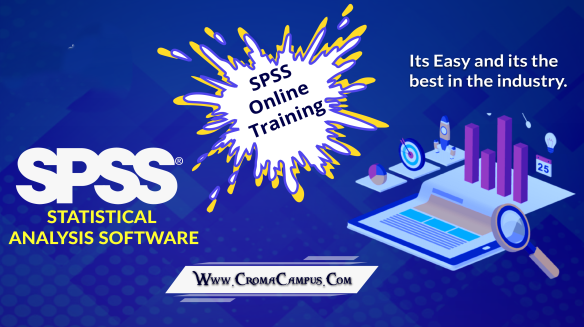In the current time, SPSS is one of the most widely used software programs for statistical analysis in research. It is mainly developed by IBM, which offers a user-friendly interface that can make complex statistical procedures accessible to researchers across various fields. For this, there is no need for deep technical skills.
In this article, we are going to discuss in detail how you can use SPSS for Data Analysis & Interpretation in Research. So if you are looking to grow your career in this field, then taking the SPSS Course will help you learn how to use SPSS for analyzing and understanding the data. Also, this course is helpful for learning the basics from scratch. So let’s begin discussing this in detail:
Use of SPSS for Data Analysis and Interpretation in Research
Here, we have discussed how to use SPSS for Data Analysis & Interpretation in Research. So if you take the SPSS Course in Delhi, then taking in-class training in Delhi will help you learn from the professionals who have years of experience in this field.
Getting Started with SPSS
When you open SPSS, you’ll see two main screens:
- Data View: This is where you type in or see your actual data. Each row is a person or case, and each column is a question or variable.
- Variable View: This is where you describe each column (or variable). You can name your variables, say what type of data it is (like number or category), and add labels.
Entering and Preparing Data
You can type the data in SPSS for importing it from Excel as well as other files.
When entering data:
- You need to be consistent, where 1 = male and 2 = female, and use the same code every time.
- In the variable view, you need to give clear names and labels for the data so that the results will be easy to read and understand
Also, choose the right measurement type:
- Nominal: Just labels (e.g., gender, colors)
- Ordinal: Ordered categories (e.g., “Agree,” “Strongly Agree”)
- Scale: Numbers with real meaning (e.g., age, income)
Checking and Cleaning Your Data
Before running any tests, it’s important to check your data for mistakes.
Here’s what to do:
- Use the Frequencies tool to spot any errors or missing values.
- SPSS gives options to deal with missing data. You can ignore them, remove them, or estimate them.
- Check for unusual values (called outliers) using boxplots or other tools. These can affect your results.
You can also use the explore feature to understand if your data fits certain rules, such as normal distribution, which is important for some tests.
Describing Your Data (Descriptive Statistics)
Descriptive statistics help you understand what your data looks like.
Use SPSS to calculate:
- Mean, median, mode (center of your data)
- Standard deviation, range, variance (how spread out the data is)
You can also make charts to show your data:
- Bar charts
- Pie charts
- Histograms
- Scatterplots
These are all found in the Graphs menu.
Making Conclusions (Inferential Statistics)
Inferential statistics help you make guesses about a larger group, based on your sample.
Here are some common tests:
- T-tests: Compare the averages of two groups (like males vs. females).
- ANOVA: Compare more than two groups.
- Paired t-tests: Compare the same people at two times (before and after something).
- Correlation: See if two things go together (like study time and test scores).
- Regression: Predict one variable using others (like predicting income based on age and education).
- Chi-square: Test if there is a correlation between the two categories, such as gender and favorite color
You can choose the right test depending on the data type and what you are looking for.
Understanding SPSS Results
SPSS gives you tables with numbers. Focus on the key results:
- P-value: You need to tell if your result is significant. When the p-value is less than 0.05, then the result would be considered important.
- Effect size: Shows how big the difference or relationship is (even if it’s statistically significant, it might not be a big effect).
Examples: Cohen’s d, Eta squared
For regression:
- Look at R-squared to see how well your variables predict the outcome.
- Look at the coefficients to see which variables are important and what kind of effect they have (positive or negative).
Apart from this, if you have gained SPSS Certification, then you can showcase this certification to employers. This certification can be helpful to get the right job opportunities and implement your expertise.
Conclusion
From the above discussion, it can be said that SPSSS will allow you to save the commands that you have used earlier. Well, it is important because this will help you repeat your analysis later and keep your research transparent. Instead of clicking OK when running a test, click Paste. This will create a syntax file with the steps SPSS will take.


